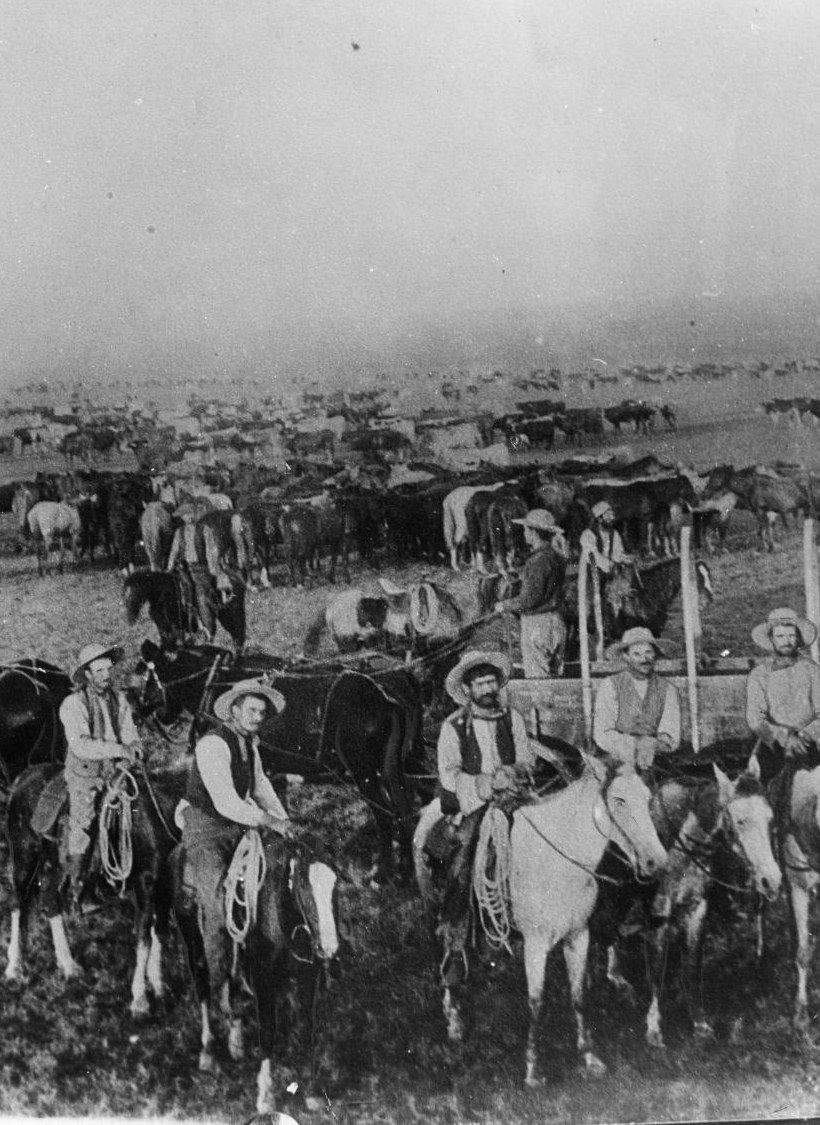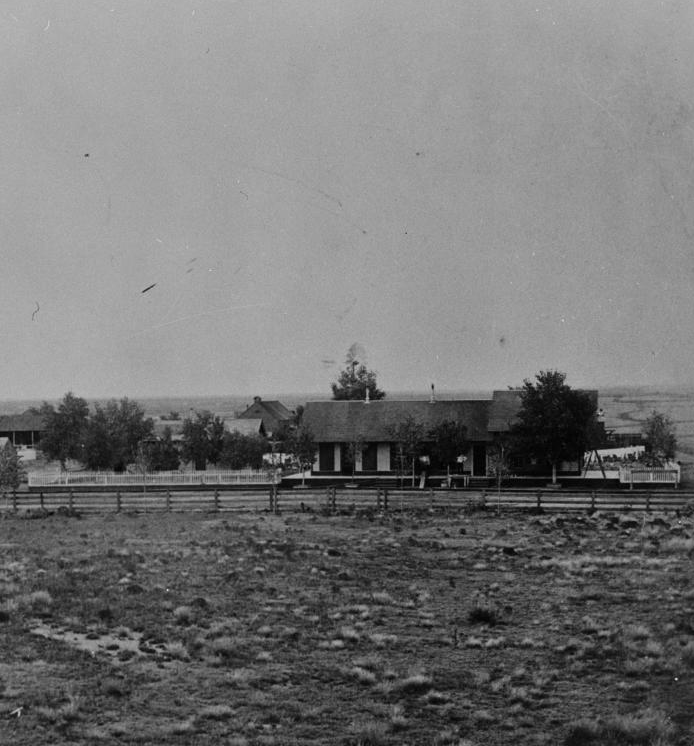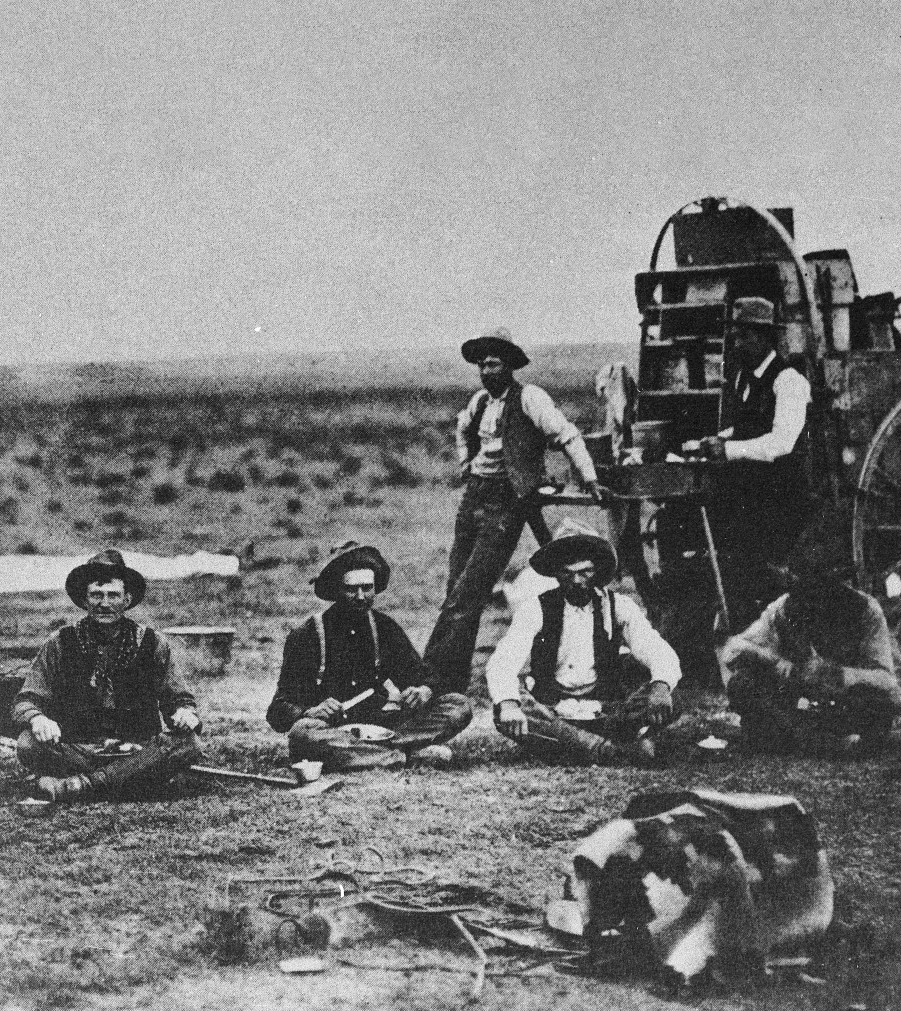The XIT
Ranch
The XIT Ranch in the 1880’s was the largest ranch in the world under fence, and it all laid in the Texas Panhandle. Its three million acres sprawled from the old Yellowhouse headquarters near what is now Lubbock, Texas, northward to the Oklahoma Panhandle, in an irregular strip that was roughly about thirty miles wide.
It covered portions of ten counties: Dallam, Hartley, Oldham, Deaf Smith, Parmer, Castro, Bailey, Lamb, Cochran and Hockley which has apparently helped perpetuate the misbelief that the brand — XIT — stands for “Ten in Texas.” The brand, in fact, was originated to thwart rustlers; one of the two originators, Ab Blocker, usually attended the XIT Reunions prior to his death at Freer, Texas, in the early 1940’s.

[XIT Ranch, ca. 1881], photograph, Date Unknown; (https://texashistory.unt.edu/ark:/67531/metapth38237/m1/1/?q=xit%20ranch: accessed August 28, 2022), University of North Texas Libraries, The Portal to Texas History, https://texashistory.unt.edu; crediting University of Texas at Arlington Library.






